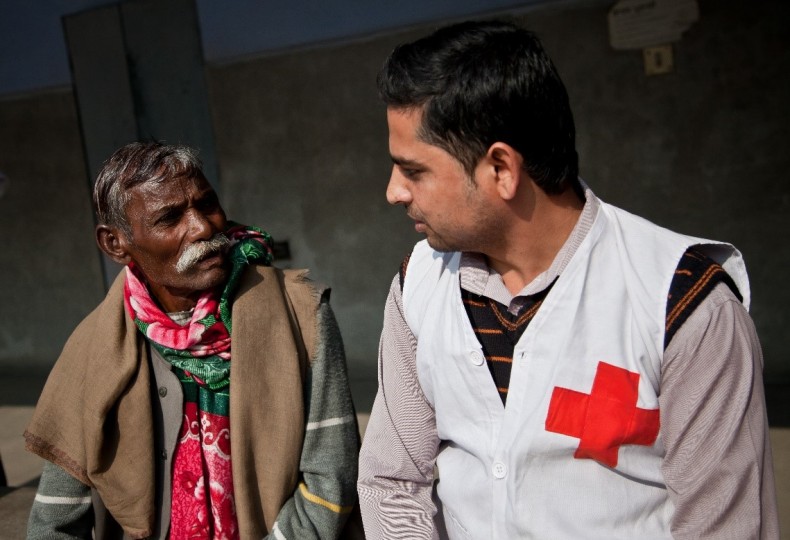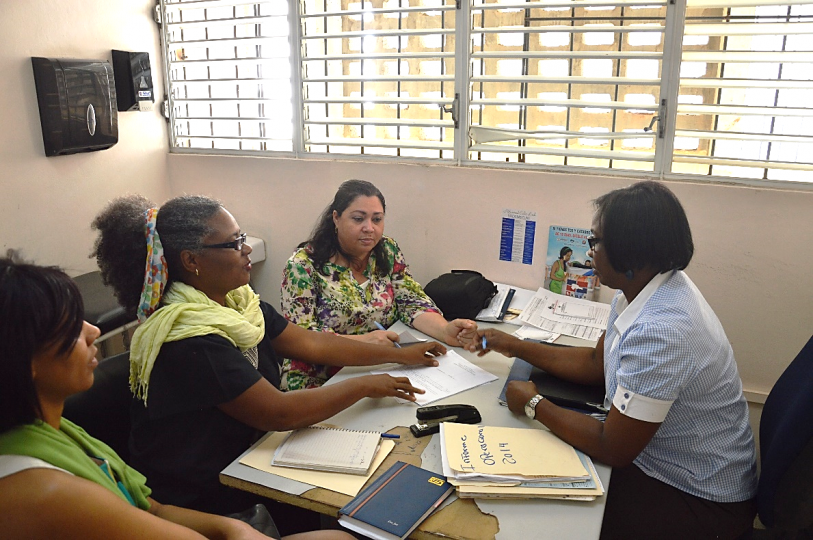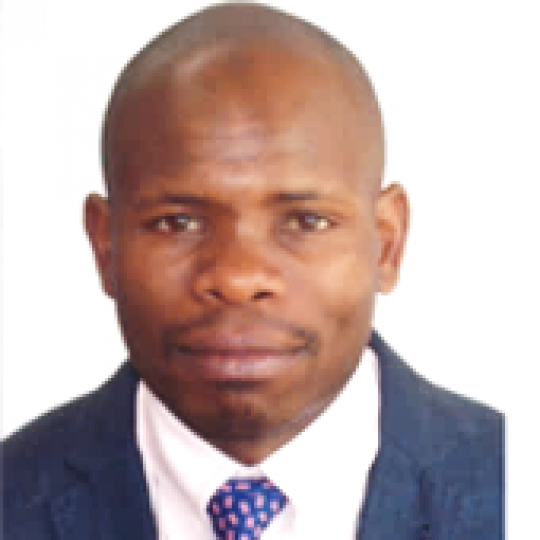This year’s conference theme was “Ending the emergency: science, leadership, action”
Tuberculosis (TB) is the leading infectious killer in the world and accounted for 1.5 million deaths last year, despite it being preventable and curable. In September 2018, heads of state and governments met in New York for the first-ever UN High-Level Meeting (UN HLM) on TB and committed to diagnose and treat 40 million cases and to initiate 30 million people on TB Preventive Therapy (TPT) by 2022. In policy terms, this landmark development was a “focusing event” – a critical moment that brought an unprecedented level of attention to a policy matter.
As a Fellow and Advisor with the Sustaining Technical and Analytic Resources (STAR) project, I recently attended the 50th Union World Conference on Lung Health in Hyderabad, India where the conference theme was “Ending the emergency: science, leadership, action.” Having worked in TB control for seven years on health systems strengthening for TB with a focus on pharmaceutical supply chain management, it was not difficult to connect to the focus of the conference. The first reason is that medicines are central to ending the emergency: they can prevent, treat, and cure TB. In addition to their powerful impact on disease control, medicines are arguably the most tangible representation of health system performance – their lack of availability invokes anxiety and undermines public trust in TB programs. On top of my career experience, my graduate specialization in health policy stimulated a curiosity to analyze how the interaction of ideas, institutions, and interests at such conferences can shape the global TB agenda. This infusion of career and academic experience is a core feature of my growth trajectory as a Fellow.
Below, I present the three key messages I carried from Hyderabad back to Malawi where I work as a STAR Fellow:
1. The world is missing millions of people with TB
According to the World Health Organization (WHO) Global TB report (2019), 10 million people were infected with active TB disease in 2018. Out of these, only seven million were detected and received treatment. The remaining three million went “missing”: they were undetected and went untreated. According to WHO, one untreated TB individual can infect up to 15 people in one year. As a result, the impact of missing cases is not only a concern at the individual level but also a public health emergency. The discussion on finding missing cases was therefore central and recurring throughout the conference. But how are patients “missed”? What I learned from the conference is that some cases are naturally difficult to target. In essence, when seven out of 10 TB cases are detected, the eighth individual who is missed does not necessarily stand next to the seventh. Thus, additional effort and investments need to be mobilized to find the missing cases.
What I also learned from the conference is that geography is not the only factor that makes it harder to identify the missing cases. I learned from civic society organizations that there are soft and pervasive barriers like stigma that worsen the situation. Those who work in TB case finding shared that in order to find the missing millions, there is an urgent need to adopt models that bring services to patients. These differentiated care models are getting traction in TB control, including the use of mobile diagnostic unit – a vehicle that moves around screening people in areas where TB burden is likely to be high.

A Red Cross worker in India speaks with a tuberculosis (TB) patient.
© 2011 Benoit Matsha-Carpentier/IFRC, Courtesy of Photoshare
2. There is need for tools and innovations to find the missing cases
Countries estimate the burden of TB through prevalence surveys: tools to aid macro-planning and stimulate the national response to TB epidemiology. However, as countries are geared for more aggressive case-finding strategies, there is a need for micro-planning that is based on sub-national disease estimates. The lack of sub-national disease estimates undermines the optimization of strategies to find missing cases at lower levels. There is a risk that programs can invest time, effort, and money to look for TB in the wrong places, which shifts resources away from areas of need – a classic example of allocative inefficiency. A team from the KIT Royal Tropical Institute of Netherlands presented the MATCH approach (Mapping and Analysis for Tailored disease Control and Health system strengthening) for National Tuberculosis Programmes. MATCH uses geographic, temporal, and demographic data to map areas where there are significant numbers of missed patients and identify gaps in the pathway of care. Gaps in the care pathway can be identified through Patient Pathway Analysis (PPA), which informs the alignment between patient care-seeking and TB-service availability. PPAs are therefore powerful tools to inform strategies to “find” the missing cases.
3. Affordable TB Preventive Therapy treatment is urgently needed
TPT remains the primary public health intervention that can reduce the risk of progression from latent TB Infection (LTBI) to active TB. In 2018, WHO published consolidated and updated guidelines for the programmatic management of LTBI. For the first time the guidelines provided recommendations for the use of a shorter regimen comprising Rifapentine and Isoniazid – key treatment medications for TB – on target populations. This newer and shorter regimen has the advantages of fewer side effects and improved treatment completion rates, which make it more effective compared to existing regimens. However, the price of Rifapentine ($45 per course) is beyond the reach for much of the eligible population. One of the biggest announcements made at the conference was a 66 percent Rifapentine price discount for 100 eligible countries through a breakthrough deal negotiated between the Global Fund and the drug manufacturer Sanofi. This price discounting is a major step in ensuring that differential pricing mechanisms facilitate rapid diffusion of technology that fulfills urgent unmet medical need.

In Santo Domingo, Dominican Republic, patients and healthcare professionals discuss client statistics and TB-HIV integration at the IntraHealth and Dominican Republic regional service center.
© 2015 Alfredo Fort, Courtesy of Photoshare
Translating conference experience to my work as a STAR Fellow
On the sidelines of the UN HLM on TB last year, USAID Administrator Ambassador Mark Green announced the USAID Global Accelerator to End TB. The new TB business model exists to leverage investments from public and private partners to accelerate progress toward the 2022 targets. On November 26, 2019, I attended an event to mark the one-year anniversary of the model in Washington, DC, where the Administrator reiterated USAID’s commitment to contribute to the end of TB. He said:
‘’And so I call on everyone here today and those in the broader international community to continue working closely with us, with everyone represented here today in the fight to end TB. To move us closer each and every day toward that goal. USAID and the entire U.S. Government is committed to playing its part. And I'm confident that together we will make it to the finish line.’’
This form of policy entrepreneurship – characterized by the willingness to invest resources and promotion of new policy approaches – is powerful in keeping TB at the top of the agenda.
For STAR Fellows working in TB, this is an opportune moment to support countries to meet the set targets under the guidance and leadership of the National TB Control Programme (NTP) managers. As a Fellow working on supply chain, I realized that all the diagnosis and treatment targets rely on the availability of commodities. My role is therefore clear-cut: I will support the NTP to ensure that there is adequate supply of diagnostics to find the cases and provide medicines to treat them. I will also support the expansion of TPT coverage by ensuring availability of the relevant medicines. This requires a responsive supply chain system with built-in early warning systems to anticipate risks of stock outs and take proactive steps to mitigate adverse consequences. I will also collaborate with my in-country counterparts and other stakeholders to build the capacity of the people who manage the supply chain at all levels of care in line with the precepts of the learning agenda under the journey to self-reliance.
TB is a public health emergency that can affect anyone, and we all have our part to play in combating it!
To learn more about TB, join the conversation on Twitter @GHSTAR_Project. Connect with Alison on LinkedIn.

Alison Mhazo
USAID STAR Fellow – TB Procurement and Supply Chain Management Technical Advisor, National TB Control Programme, Malawi